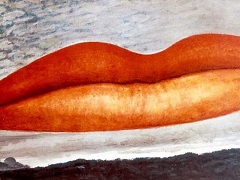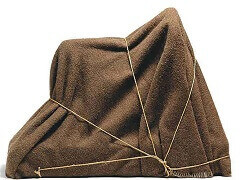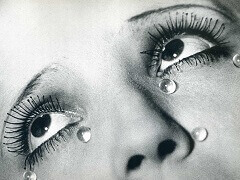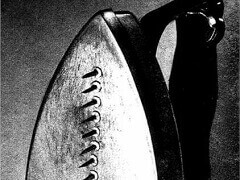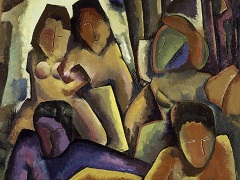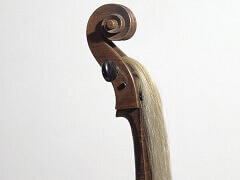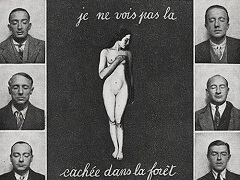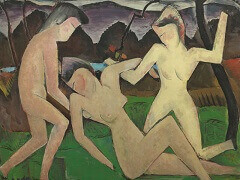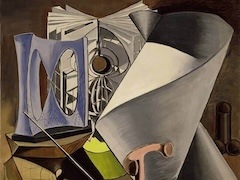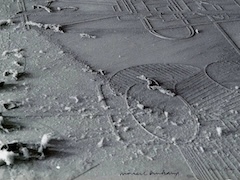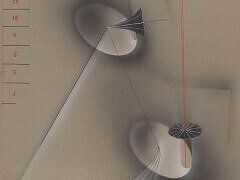Ingre's Violin, 1924 by Man Ray
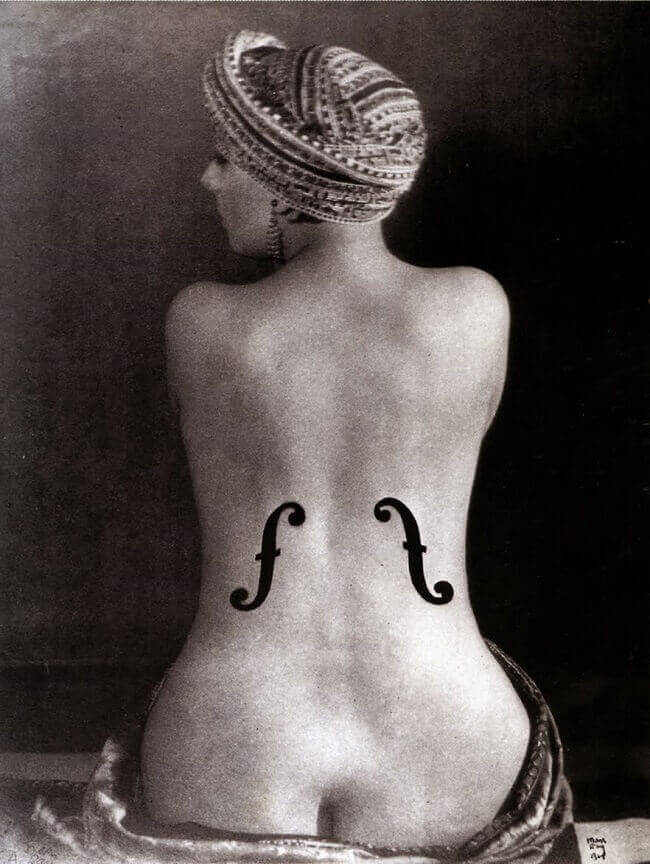
Inspired by Jean-Auguste-Dominique Ingres's La Grande Baigneuse, Ray used Kiki de Montparnasse wearing a turban as a model for this piece. He transformed the female body into a musical instrument by painting sound-holes on her back, playing with the idea of objectification of an animate body. Throughout his career Man Ray was fascinated with juxtaposing an object with a female body.
Ingres's works were admired by many surrealist artists, including Ray, for his representation of distorted female figures. Ingres's well-known passion for the violin created the colloquialism in French, 'violon d'Ingres', meaning a hobby. Many describe Le Violon d'Ingres as a visual pun, depicting his muse, Kiki, as Ray's 'violon d'Ingres.'
This image is one of many of Man Ray's photographs that have gone on to have a rich afterlife in popular culture. F-holes have become a popular tattoo design amongst musicians, and fashion designers like Viktor and Rolf referenced the image to create their spring 2008 collection.
Along with Persistence of Memory by Salvador Dali, Ingre's Violin has become the most iconic images of Surrealism Movement.

